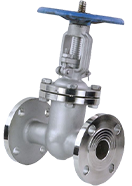Understanding the Functionality and Applications of On-Off Globe Valves in Industry
Understanding On/Off Globe Valves Functionality, Applications, and Benefits
On/off globe valves play a pivotal role in the management of fluid flow in various industrial processes. Their unique design and operational functionality make them a crucial component in pipelines, ensuring processes can be controlled efficiently and safely. This article will delve into the fundamental aspects of on/off globe valves, including their design, operation, applications, and advantages.
Design and Functionality
Globe valves are distinguished by their spherical body shape, which separates the flow path into two halves. This design is essential for minimizing turbulence and ensuring smooth flow control. The key components of a globe valve include
1. Body The main part that holds the valve's internal components. 2. Bonnet The top cover of the valve that houses the stem and actuator mechanism. 3. Disc The moving part that blocks or allows flow; it is usually conical in shape, enabling a tight seal. 4. Seat The fixed part against which the disc closes, controlling the flow. 5. Stem The component that connects the actuator to the disc, translating motion into flow control.
In on/off applications, these valves are typically installed in fully open or fully closed positions. When the valve is in the open position, fluid can flow freely through it; when closed, the flow is entirely shut off. Unlike other valve types, such as ball valves that provide quicker operation, globe valves take more time to open or close due to their design, which makes them ideal for throttling applications but they can also be effectively utilized for straightforward on/off purposes.
Applications
On/off globe valves are ubiquitous in various industries due to their reliability and effectiveness in controlling flow. Common applications include
- Water Supply Systems Globe valves are often used to control water distribution in municipal water systems and irrigation processes, ensuring consistent pressure and flow rates. - Oil and Gas In the oil and gas sector, on/off globe valves regulate the flow of hydrocarbons, contributing to safe operation in pipelines and processing facilities. - Chemical Processing They are employed in chemical plants to control the flow of reactants and ensure safe processing of hazardous materials. - Power Plants Globe valves help manage steam and water flow, optimizing performance in both fossil fuel and nuclear power generation.
on off globe valve

Their ability to handle high-pressure systems and various fluid types makes them a versatile choice across numerous applications.
Benefits
Using on/off globe valves offers several significant advantages
1. Precise Control Globe valves are well known for their excellent throttling capabilities. This precision is particularly beneficial in applications where fluid flow needs to be finely regulated. 2. Durability Constructed from robust materials such as stainless steel, cast iron, and brass, globe valves can withstand harsh conditions, which is critical for their longevity and reliability.
3. Versatility They are suitable for various flow media, including gases, liquids, and slurries. Their adaptability makes them a preferred choice in multiple sectors.
4. Leak Prevention The design of the globe valve helps in minimizing leakage, ensuring that processes remain efficient and safe.
5. Maintenance While all valves require maintenance, globe valves are typically easier to service due to their accessible internals; thus, routine inspections can be performed without dismantling the entire system.
Conclusion
On/off globe valves are integral to numerous industrial processes, providing reliability and precision in fluid control. Their unique design, combined with various advantages, makes them a staple in pipelines and processing systems across industries. As technology advances, the materials used and performance of globe valves continue to improve, ensuring they remain effective tools for managing fluid flow for years to come. Understanding the functionality and applications of these valves is crucial for engineers and operators alike, ensuring safe and efficient operations across the board.
-
The Key to Fluid Control: Exploring the Advantages of Ball Valves in Industrial SystemsNewsJul.09,2025
-
The Versatile World of 1, 2, and 3 Piece Ball ValvesNewsJul.09,2025
-
Stainless Steel Ball Valves: The Ideal Choice for Efficient Flow ControlNewsJul.09,2025
-
Optimizing Fluid Control with Ball Float ValvesNewsJul.09,2025
-
Manual Gate Valves: Essential for Control and EfficiencyNewsJul.09,2025
-
Everything You Need to Know About Butterfly ValvesNewsJul.09,2025
-
The Versatility of Wafer Type Butterfly ValvesNewsJul.08,2025




